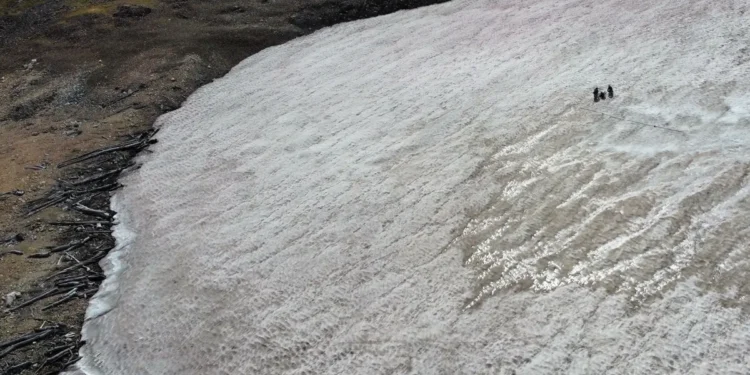Scientists have uncovered a remarkable ancient forest trapped beneath layers of ice for thousands of years, revealing critical clues about the climate’s dramatic swings over millennia. Found high up in the Rocky Mountains, this forgotten woodland has remained hidden beneath an icy shield—until now.
Researchers from Montana State University (MSU) stumbled upon the remains of a mature whitebark pine forest at an astonishing elevation of over 3,000 meters. Even more intriguing, this ancient forest lies nearly 180 meters above today’s treeline, hinting at a distant past when conditions were vastly different.
In mountainous regions, treelines—the highest point where trees can grow—are nature’s thermometer. When temperatures rise, the treeline creeps upward, extending the range of forests. When it cools, the treeline retreats downslope, as harsher conditions limit tree growth. While wind, moisture, and snowpack play a role, temperature during the growing season is the key driver.
By examining the elevation of the ancient treeline, scientists estimate that warm-season temperatures around 6,000 years ago averaged 6.2°C, similar to mid-20th-century levels. This allowed the forest to flourish for centuries, defying today’s frigid conditions.
Triggered by Nature’s Fury
Roughly 5,500 years ago, the thriving forest met a sudden end. The likely culprit? A dramatic cooling event, possibly triggered by powerful volcanic eruptions in the Northern Hemisphere. The eruptions would have spewed ash into the atmosphere, blocking sunlight and drastically lowering temperatures. The forest, unable to adapt to the rapid change, eventually perished.
David McWethy, one of the lead researchers and an associate professor at MSU, described the find as “a dramatic example of how sensitive ecosystems are to temperature shifts.” He emphasized how these ancient forests offer a rare glimpse into how climate fluctuations have shaped the planet’s landscapes.
Discoveries like this are incredibly rare. Most ancient ecosystems preserved in ice are found in polar regions like Greenland or Antarctica. What makes this find extraordinary is that the forest was preserved under a stationary ice patch—not a glacier that would have destroyed the remains over time. This unique preservation allows scientists to extract critical data about Earth’s ancient climate.
“Finding ice patches that have lasted this long in mid-latitude regions is a game-changer,” McWethy noted. The research team is now racing against time to gather as much information as possible before the ice completely disappears, potentially unlocking secrets about how ecosystems responded to past climate crises—and how they might react in the future.











